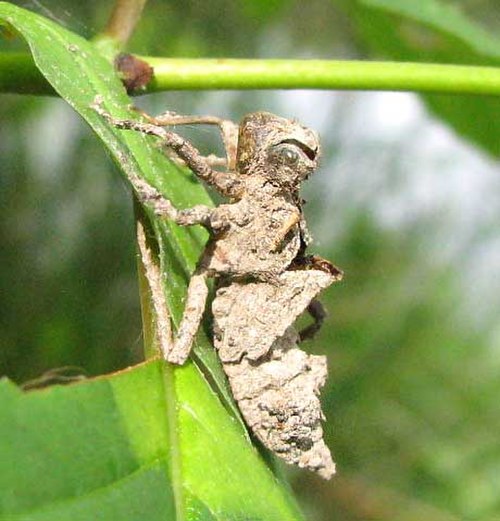Endoskeletonnoun
(anatomy) The internal skeleton of an animal, which in vertebrates is composed of bone and cartilage.
Endoskeletonnoun
The bony, cartilaginous, or other internal framework of an animal, as distinguished from the exoskeleton.
Endoskeletonnoun
the internal skeleton; bony and cartilaginous structure (especially of vertebrates)
Endoskeleton
An endoskeleton (From Greek ἔνδον, éndon = , + σκελετός, skeletos = ) is an internal support structure of an animal, composed of mineralized tissue.
Exoskeletonnoun
(anatomy) A hard outer structure that provides both structure and protection to creatures such as insects and Crustacea.
Exoskeletonnoun
The hardened parts of the external integument of an animal, including hair, feathers, nails, horns, scales, etc.,as well as the armor of armadillos and many reptiles, and the shells or hardened integument of numerous invertebrates; external skeleton; dermoskeleton.
Exoskeletonnoun
the exterior protective or supporting structure or shell of many animals (especially invertebrates) including bony or horny parts such as nails or scales or hoofs
Exoskeleton
An exoskeleton (from Greek έξω, éxō and σκελετός, skeletós ) is the external skeleton that supports and protects an animal's body, in contrast to the internal skeleton (endoskeleton) of, for example, a human. In usage, some of the larger kinds of exoskeletons are known as .









